 Over the past 15 years, unhealthy weight-loss behaviors among U.S. adolescents are becoming more widespread. This 5-page fact sheet addresses the consequences and risks associated with risky weight-control practices and discusses the prevalence of eating disorders and the role of body image in weight practices. The publication also provides references that can be used to help practitioners educate youth on the importance of setting realistic goals and enhancing body satisfaction. Written by Emily Johnson and Kate Fogarty, and published by the UF Department of Family Youth and Community Sciences, September 2014. (AP Photo/University of Florida/IFAS/Josh Wickham)
Over the past 15 years, unhealthy weight-loss behaviors among U.S. adolescents are becoming more widespread. This 5-page fact sheet addresses the consequences and risks associated with risky weight-control practices and discusses the prevalence of eating disorders and the role of body image in weight practices. The publication also provides references that can be used to help practitioners educate youth on the importance of setting realistic goals and enhancing body satisfaction. Written by Emily Johnson and Kate Fogarty, and published by the UF Department of Family Youth and Community Sciences, September 2014. (AP Photo/University of Florida/IFAS/Josh Wickham)
http://edis.ifas.ufl.edu/fy1452
Category: Health & Nutrition
Healthy Living for Elders: Use Your Medicines Safely!
 Medicines can help us feel better and improve our health, but if we do not use them correctly, they can make us feel worse or even cause major health problems. To use your medicines safely, keep the following tips in mind. This 4-page large print fact sheet was written by Paulina Wittkowsky, Linda B. Bobroff, and Emily Minton, and published by the UF Department of Family Youth and Community Sciences, November 2014. (Photo: Thinkstock.com)
Medicines can help us feel better and improve our health, but if we do not use them correctly, they can make us feel worse or even cause major health problems. To use your medicines safely, keep the following tips in mind. This 4-page large print fact sheet was written by Paulina Wittkowsky, Linda B. Bobroff, and Emily Minton, and published by the UF Department of Family Youth and Community Sciences, November 2014. (Photo: Thinkstock.com)
http://edis.ifas.ufl.edu/fy667
Gulf Coast Tick, Amblyomma maculatum Koch (Acari: Ixodidae: Amblyomminae)
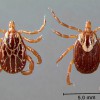 Gulf Coast ticks are found in grass prairies and coastal uplands throughout much of the western hemisphere. The ticks are ectoparasites that feed on a variety of birds and mammals, and will readily bite humans. Gulf Coast ticks are of increasing concern because of their ability to transmit several pathogens of veterinary and medical importance. This 7-page fact sheet was written by Jeffrey C. Hertz and Phillip E. Kaufman, and published by the UF Department of Entomology and Nematology, October 2014. (Photo: Jeffrey C. Hertz, edited by Jane Medley)
Gulf Coast ticks are found in grass prairies and coastal uplands throughout much of the western hemisphere. The ticks are ectoparasites that feed on a variety of birds and mammals, and will readily bite humans. Gulf Coast ticks are of increasing concern because of their ability to transmit several pathogens of veterinary and medical importance. This 7-page fact sheet was written by Jeffrey C. Hertz and Phillip E. Kaufman, and published by the UF Department of Entomology and Nematology, October 2014. (Photo: Jeffrey C. Hertz, edited by Jane Medley)
http://edis.ifas.ufl.edu/in1062
De compras para la salud: Alimentos con fibra anadida
 La fibra en los alimentos consiste de carbohidratos que no pueden ser digeridos. Aunque muchos alimentos naturalmente contienen fibra, hay ingredientes altos en fibra que comúnmente se añaden a los alimentos para aumentar el contenido de fibra. Los ingredientes con fibra se pueden adicionar por razones funcionales o de salud. This 3-page fact sheet is the Spanish language version of Shopping for Health: Foods with Added Fiber, written by Wendy J. Dahl, and published by the UF Department of Food Science and Human Nutrition, October 2014. (Photo: iStock/Thinkstock.com)
La fibra en los alimentos consiste de carbohidratos que no pueden ser digeridos. Aunque muchos alimentos naturalmente contienen fibra, hay ingredientes altos en fibra que comúnmente se añaden a los alimentos para aumentar el contenido de fibra. Los ingredientes con fibra se pueden adicionar por razones funcionales o de salud. This 3-page fact sheet is the Spanish language version of Shopping for Health: Foods with Added Fiber, written by Wendy J. Dahl, and published by the UF Department of Food Science and Human Nutrition, October 2014. (Photo: iStock/Thinkstock.com)
http://edis.ifas.ufl.edu/fs255
Facts about Potassium
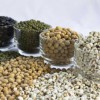 Potassium is a mineral found inside body cells. It is one of several minerals known as electrolytes. It is important because it helps regulate fluid and electrolyte balance, maintain normal blood pressure, transmit nerve impulses, control muscle contraction, and maintain healthy bones. Legumes are good sources of potassium, as are nuts and seeds. This 2-page fact sheet was written by R. Elaine Turner and Linda B. Bobroff, and published by the UF Department of Family Youth and Community Sciences, September 2014. (Photo: tofumax/iStock/Thinkstock.com)
Potassium is a mineral found inside body cells. It is one of several minerals known as electrolytes. It is important because it helps regulate fluid and electrolyte balance, maintain normal blood pressure, transmit nerve impulses, control muscle contraction, and maintain healthy bones. Legumes are good sources of potassium, as are nuts and seeds. This 2-page fact sheet was written by R. Elaine Turner and Linda B. Bobroff, and published by the UF Department of Family Youth and Community Sciences, September 2014. (Photo: tofumax/iStock/Thinkstock.com)
http://edis.ifas.ufl.edu/fy889
A Farm to School Procurement Calculator for Specialty Crop Producers and School Food Service Staff
 Florida Farm to School programs are designed to connect producers with schools. But school food service staff make their purchasing decisions in terms of servings and producers pack their products by weight. General calculators and guides designed for national Farm to School programs don’t address Florida’s diverse production of fresh fruits and vegetables. This procurement calculator and guide for Florida Farm to School programs was written by Jonathan A. Watson, Danielle Treadwell, Anna Prizzia, and Kelli Brew, and published by the UF Department of Horticultural Sciences, September 2014.
Florida Farm to School programs are designed to connect producers with schools. But school food service staff make their purchasing decisions in terms of servings and producers pack their products by weight. General calculators and guides designed for national Farm to School programs don’t address Florida’s diverse production of fresh fruits and vegetables. This procurement calculator and guide for Florida Farm to School programs was written by Jonathan A. Watson, Danielle Treadwell, Anna Prizzia, and Kelli Brew, and published by the UF Department of Horticultural Sciences, September 2014.
http://edis.ifas.ufl.edu/hs1250
African malaria mosquito Anopheles gambiae Giles (Insecta: Diptera: Culicidae)
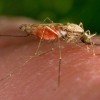 Anopheles gambiae Giles is commonly called the African malaria mosquito because it is the most efficient vector of human malaria in the Afrotropical Region. They are considered to be one of the world’s most important human malaria vectors because of their susceptibility to the Plasmodium parasite, their preference for humans as a host, and their indoor-feeding behavior. Due to their short development time and their preference for developmental habitats near human dwellings, Anopheles gambiae are considered effective vectors of human malaria, as well as lymphatic filariasis (elephantiasis). This 6-page fact sheet was written by Sabrina A. White and Phillip E. Kaufman, and published by the UF Department of Entomology and Nematology, September 2014.
Anopheles gambiae Giles is commonly called the African malaria mosquito because it is the most efficient vector of human malaria in the Afrotropical Region. They are considered to be one of the world’s most important human malaria vectors because of their susceptibility to the Plasmodium parasite, their preference for humans as a host, and their indoor-feeding behavior. Due to their short development time and their preference for developmental habitats near human dwellings, Anopheles gambiae are considered effective vectors of human malaria, as well as lymphatic filariasis (elephantiasis). This 6-page fact sheet was written by Sabrina A. White and Phillip E. Kaufman, and published by the UF Department of Entomology and Nematology, September 2014.
http://edis.ifas.ufl.edu/in1048
Pool Chemicals and Personal Safety
 Pool chemicals are among the most common household substances and are used to protect health in recreational waters. Pool chemicals containing chlorine safeguard against recreational-water illnesses caused by disease-causing pathogens, such as the diarrhea-causing Cryptosporidium. They also enhance disinfection by regulating water pH. But even though these materials are regularly handled by homeowners, most don’t ever realize that they are handling pesticides. This 3-page fact sheet was written by Fred Fishel, and published by the UF Department of Agronomy, September 2014.
Pool chemicals are among the most common household substances and are used to protect health in recreational waters. Pool chemicals containing chlorine safeguard against recreational-water illnesses caused by disease-causing pathogens, such as the diarrhea-causing Cryptosporidium. They also enhance disinfection by regulating water pH. But even though these materials are regularly handled by homeowners, most don’t ever realize that they are handling pesticides. This 3-page fact sheet was written by Fred Fishel, and published by the UF Department of Agronomy, September 2014.
http://edis.ifas.ufl.edu/pi253
Consuming local vegetables from our local growers
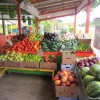 In recent years, consumers increasingly are seeking out locally grown foods, due to concern for freshness, food safety, and the carbon footprint associated with food sourced from distant places. This 5-page fact sheet promotes local vegetable consumption by pointing out some of the advantages, benefits, and business opportunities associated with local vegetable production and consumption. Written by Qingren Wang, Edward A. Evans, Margie Pikarsky, and Teresa Olczyk, and published by the UF Department of Horticultural Sciences, September 2014.
In recent years, consumers increasingly are seeking out locally grown foods, due to concern for freshness, food safety, and the carbon footprint associated with food sourced from distant places. This 5-page fact sheet promotes local vegetable consumption by pointing out some of the advantages, benefits, and business opportunities associated with local vegetable production and consumption. Written by Qingren Wang, Edward A. Evans, Margie Pikarsky, and Teresa Olczyk, and published by the UF Department of Horticultural Sciences, September 2014.
http://edis.ifas.ufl.edu/hs1251
Datos sobre el fosforo
 El fósforo es un mineral que se encuentra en todas las células del cuerpo, por lo general en forma de fosfato. Es el segundo mineral más abundante en el cuerpo después del calcio. Alrededor del 85% del fósforo se almacena en los huesos y dientes. Es importante para la formación de huesos y dientes, además de la reparación de huesos.
El fósforo es un mineral que se encuentra en todas las células del cuerpo, por lo general en forma de fosfato. Es el segundo mineral más abundante en el cuerpo después del calcio. Alrededor del 85% del fósforo se almacena en los huesos y dientes. Es importante para la formación de huesos y dientes, además de la reparación de huesos.
This 3-page fact sheet was written by Nancy J. Gal y Wendy J. Dahl, and published by the UF Department of Food Science and Human Nutrition, August 2014.
http://edis.ifas.ufl.edu/fs252
Clostridium difficile: an Important Opportunistic Pathogen in Healthcare-Associated Infections
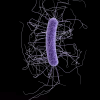 Opportunistic pathogens are significant health threats to vulnerable people with weakened immune systems, such as people with HIV/AIDS or those on immune-suppressing therapies. One opportunistic pathogen, Clostridium difficile, has been getting more attention in recent years because of its association with antibiotic use and high death rate in the elderly. This factsheet will provide an overview of Clostridium difficile infection (CDI) with a focus on healthcare-associated infections. This 5-page fact sheet was written by Soohyoun Ahn and Amarat H. Simonne, and published by the UF Department of Food Science and Human Nutrition, September 2014.
Opportunistic pathogens are significant health threats to vulnerable people with weakened immune systems, such as people with HIV/AIDS or those on immune-suppressing therapies. One opportunistic pathogen, Clostridium difficile, has been getting more attention in recent years because of its association with antibiotic use and high death rate in the elderly. This factsheet will provide an overview of Clostridium difficile infection (CDI) with a focus on healthcare-associated infections. This 5-page fact sheet was written by Soohyoun Ahn and Amarat H. Simonne, and published by the UF Department of Food Science and Human Nutrition, September 2014.
http://edis.ifas.ufl.edu/fs253
Hydration Myths
 Whether at school, work, or running errands, it is common to see people sipping on their water bottles. This fashionable trend is a healthy one because water is essential for life. But while most people know that drinking water is good for them, many misconceptions exist about water and hydration. Learn the truth behind some of the most common hydration myths. This 4-page fact sheet was written by Lauren Caruso, Karla P. Shelnutt, and Gail Kauwell, and published by the UF Department of Family Youth and Community Sciences, August 2014.
Whether at school, work, or running errands, it is common to see people sipping on their water bottles. This fashionable trend is a healthy one because water is essential for life. But while most people know that drinking water is good for them, many misconceptions exist about water and hydration. Learn the truth behind some of the most common hydration myths. This 4-page fact sheet was written by Lauren Caruso, Karla P. Shelnutt, and Gail Kauwell, and published by the UF Department of Family Youth and Community Sciences, August 2014.
http://edis.ifas.ufl.edu/fy1409
Datos sobre los antioxidantes
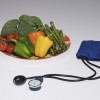 Nuestro cuerpo está constituido de células. Dentro de éstas ocurren constantemente reacciones químicas, que se conocen colectivamente como metabolismo. Estas reacciones son necesarias para la vida, pero algunas veces crean radicales libres. Los radicales libres son moléculas altamente reactivas que pueden iniciar reacciones dañinas en cadena en nuestras células. Esto se conoce como estrés oxidativo. Diversas investigaciones relacionan el estrés oxidativo con muchas enfermedades: artritis, enfermedades de los pulmones (como enfisema), enfermedades del corazón, enfermedad cerebro vascular, ulceras, hipertensión, Parkinson y Altzheimer, distrofia muscular y otras. El estrés oxidativo también contribuye al proceso normal de envejecimiento. This 3-page fact sheet is the Spanish language version of Facts about Antioxidants, written by Kaitlin G. Clark and Wendy J. Dahl, and published by the UF Department of Food Science and Human Nutrition, July 2014.
Nuestro cuerpo está constituido de células. Dentro de éstas ocurren constantemente reacciones químicas, que se conocen colectivamente como metabolismo. Estas reacciones son necesarias para la vida, pero algunas veces crean radicales libres. Los radicales libres son moléculas altamente reactivas que pueden iniciar reacciones dañinas en cadena en nuestras células. Esto se conoce como estrés oxidativo. Diversas investigaciones relacionan el estrés oxidativo con muchas enfermedades: artritis, enfermedades de los pulmones (como enfisema), enfermedades del corazón, enfermedad cerebro vascular, ulceras, hipertensión, Parkinson y Altzheimer, distrofia muscular y otras. El estrés oxidativo también contribuye al proceso normal de envejecimiento. This 3-page fact sheet is the Spanish language version of Facts about Antioxidants, written by Kaitlin G. Clark and Wendy J. Dahl, and published by the UF Department of Food Science and Human Nutrition, July 2014.
http://edis.ifas.ufl.edu/fs251
Datos sobre los Carbohidratos
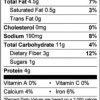 Los carbohidratos, grasas y proteínas son los tres nutrientes que proveen energía (calorías). Sin embargo, los carbohidratos como los almidones y azúcares son la fuente más importante y principal de energía. Durante la digestión, el almidón se rompe en azúcares (glucosa). Los carbohidratos en forma de glucosa proveen energía a las células, tejidos y órganos para llevar a cabo las actividades diarías. Alguna glucosa se almacena en el hígado y células de los músculos para usarla cuando se requiera. Los niños necesitan carbohidratos para el crecimiento y los adultos necesitan para mantener el peso. This 3-page fact sheet is the Spanish language version of Facts about Carbohydrate, written by Nancy J. Gal, Amanda L. Ford and Wendy J. Dahl, and published by the UF Department of Food Science and Human Nutrition, July 2014.
Los carbohidratos, grasas y proteínas son los tres nutrientes que proveen energía (calorías). Sin embargo, los carbohidratos como los almidones y azúcares son la fuente más importante y principal de energía. Durante la digestión, el almidón se rompe en azúcares (glucosa). Los carbohidratos en forma de glucosa proveen energía a las células, tejidos y órganos para llevar a cabo las actividades diarías. Alguna glucosa se almacena en el hígado y células de los músculos para usarla cuando se requiera. Los niños necesitan carbohidratos para el crecimiento y los adultos necesitan para mantener el peso. This 3-page fact sheet is the Spanish language version of Facts about Carbohydrate, written by Nancy J. Gal, Amanda L. Ford and Wendy J. Dahl, and published by the UF Department of Food Science and Human Nutrition, July 2014.
http://edis.ifas.ufl.edu/fs250
Datos sobre los flavonoides
 Los flavonoides son compuestos orgánicos que se encuentran naturalmente en plantas. Existen en la naturaleza más de 5 mil compuestos flavonoides, aquellos que se encuentran en las comidas caen en seis categorías: flavonoles, antocianinas, iso-flavonoides, flavan-3 oles, flavonas y flavanonas. Los compuestos en estas categorías son de interés por los beneficios potenciales sobre la salud. The English version of this document is Facts about Flavonoids. This 4-page fact sheet was written by Inbar Schapsis y Wendy J. Dahl, and published by the UF Department of Food Science and Human Nutrition, July 2014.
Los flavonoides son compuestos orgánicos que se encuentran naturalmente en plantas. Existen en la naturaleza más de 5 mil compuestos flavonoides, aquellos que se encuentran en las comidas caen en seis categorías: flavonoles, antocianinas, iso-flavonoides, flavan-3 oles, flavonas y flavanonas. Los compuestos en estas categorías son de interés por los beneficios potenciales sobre la salud. The English version of this document is Facts about Flavonoids. This 4-page fact sheet was written by Inbar Schapsis y Wendy J. Dahl, and published by the UF Department of Food Science and Human Nutrition, July 2014.
http://edis.ifas.ufl.edu/fs249
Understanding the Changes to the Patient’s Bill of Rights as a Result of the Affordable Care Act
 The Affordable Care Act is a legislative act that has provided individuals and families more choices related to healthcare insurances. It offers consumers new protections and benefits by creating a more defined Patient’s Bill of Rights. This 2-page fact sheet was written by Deanna Andrews and Martie Gillen, and published by the UF Department of Family Youth and Community Sciences, May 2014.
The Affordable Care Act is a legislative act that has provided individuals and families more choices related to healthcare insurances. It offers consumers new protections and benefits by creating a more defined Patient’s Bill of Rights. This 2-page fact sheet was written by Deanna Andrews and Martie Gillen, and published by the UF Department of Family Youth and Community Sciences, May 2014.
http://edis.ifas.ufl.edu/fy1410
Facts about Quinoa
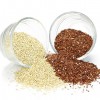 The U.S. Department of Agriculture’s MyPlate nutrition guide recommends that Americans consume half of their grains from whole grain foods. Whole wheat bread and oatmeal are whole grain foods that are familiar to most Americans, but lots of other whole grain foods are also available. An example of an unfamiliar whole grain food is quinoa (pronounced keen-wa). Quinoa is a nutritious seed that is simple to prepare. It can be served as a hot cereal or side dish, as a cold salad similar to pasta salad, or it can be used in recipes in place of rice or other grains. It also has the advantage of being gluten free, which is a must for people diagnosed with celiac disease. Follow the link to learn more about quinoa and what it has to offer. This 3-page fact sheet was written by Alexandra Dati, Gail Kauwell, and Amy Simonne, and published by the UF Department of Family Youth and Community Sciences, May 2014.
The U.S. Department of Agriculture’s MyPlate nutrition guide recommends that Americans consume half of their grains from whole grain foods. Whole wheat bread and oatmeal are whole grain foods that are familiar to most Americans, but lots of other whole grain foods are also available. An example of an unfamiliar whole grain food is quinoa (pronounced keen-wa). Quinoa is a nutritious seed that is simple to prepare. It can be served as a hot cereal or side dish, as a cold salad similar to pasta salad, or it can be used in recipes in place of rice or other grains. It also has the advantage of being gluten free, which is a must for people diagnosed with celiac disease. Follow the link to learn more about quinoa and what it has to offer. This 3-page fact sheet was written by Alexandra Dati, Gail Kauwell, and Amy Simonne, and published by the UF Department of Family Youth and Community Sciences, May 2014.
http://edis.ifas.ufl.edu/fy1408
Dealing with Food Allergies
 A food allergy is an immune system reaction that happens after a person consumes what is normally considered a safe food. Food allergies occur more often in children than in adults: 4%–8% of those aged 4 or under and about 2% of adults are affected. Allergic reactions from food have led to over 20,000 emergency room visits per year. Annually, between 150 and 200 fatalities associated with food allergic reactions occur in the United States. This 4-page fact sheet was written by Keith R. Schneider, Renée Goodrich Schneider, Soohyoun Ahn, and Susie Richardson, and published by the UF Department of Food Science and Human Nutrition, January 2014.
A food allergy is an immune system reaction that happens after a person consumes what is normally considered a safe food. Food allergies occur more often in children than in adults: 4%–8% of those aged 4 or under and about 2% of adults are affected. Allergic reactions from food have led to over 20,000 emergency room visits per year. Annually, between 150 and 200 fatalities associated with food allergic reactions occur in the United States. This 4-page fact sheet was written by Keith R. Schneider, Renée Goodrich Schneider, Soohyoun Ahn, and Susie Richardson, and published by the UF Department of Food Science and Human Nutrition, January 2014.
http://edis.ifas.ufl.edu/fs123
Healthy Living: Food Can Affect Your Medicines
 Do the foods you eat affect the way your medicines work? It’s very possible. Certain foods can affect the way prescription and over-the-counter medicines work by delaying, decreasing, or enhancing how much of the drug is absorbed by the body. This can cause unwanted and harmful side effects. Follow the information in this 2-page fact sheet to reduce your risk of common food and drug interactions. Written by Paulina Wittkowsky and Linda B. Bobroff, and published by the UF Department of Family Youth and Community Sciences, May 2014.
Do the foods you eat affect the way your medicines work? It’s very possible. Certain foods can affect the way prescription and over-the-counter medicines work by delaying, decreasing, or enhancing how much of the drug is absorbed by the body. This can cause unwanted and harmful side effects. Follow the information in this 2-page fact sheet to reduce your risk of common food and drug interactions. Written by Paulina Wittkowsky and Linda B. Bobroff, and published by the UF Department of Family Youth and Community Sciences, May 2014.
http://edis.ifas.ufl.edu/fy676
MyPlate “10 Tips” Nutrition Education series
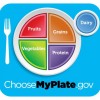 After introducing MyPlate in June 2011, USDA provided a series of one-page fact sheets to help consumers use the dietary advice of the Dietary Guidelines 2010. The USDA added new fact sheets in December 2011 and continued adding fact sheets in 2012, 2013, and 2014. These fact sheets are distributed by UF/IFAS Extension for Extension faculty, health professionals, and consumers. They are also called the “Ten Tips Nutrition Education Series” and “DG TipSheets”
After introducing MyPlate in June 2011, USDA provided a series of one-page fact sheets to help consumers use the dietary advice of the Dietary Guidelines 2010. The USDA added new fact sheets in December 2011 and continued adding fact sheets in 2012, 2013, and 2014. These fact sheets are distributed by UF/IFAS Extension for Extension faculty, health professionals, and consumers. They are also called the “Ten Tips Nutrition Education Series” and “DG TipSheets”
New in 2014:
- 32. Make Healthier Holiday Choices
- 33. Men’s Health: Get the Facts to Feel and Look Better
- 34. Teen Guys: Choose the Foods You Need To Grow
- 35. Women’s Health: Make Better Food Choices
- 36. Teen Girls: Eat Smart and Be Active As You Grow
- 37. Save More at the Grocery Store
http://edis.ifas.ufl.edu/topic_myplate_nutrition_education_series